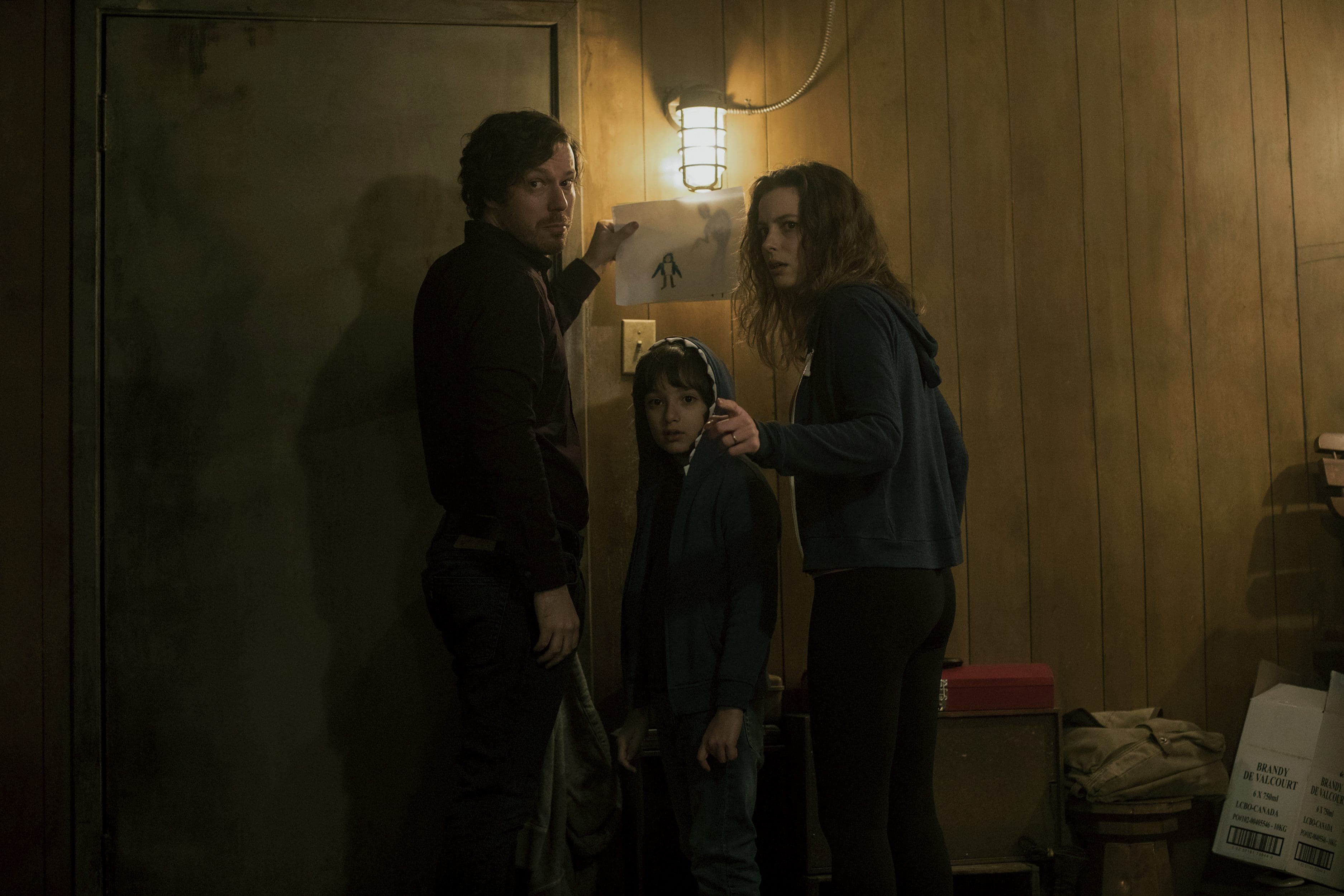
Written by Samuel Niles
There are many areas that could have spelt disaster for Come Play. Using the innocence of childhood to highlight horror elements is not uncommon (The Babadook, for instance), nor is using technology in an attempt to modernize the genre.
Both are on display in Come Play’s opening shot. In it, we are introduced to Oliver (Azhy Robertson), a non-verbal autistic boy, as he watches Spongebob Squarepants on a smart phone. He does this to drown out the arguing of his parents, Sarah (Gillian Jacobs) and Marty (John Gallagher Jr.). After a short period of time, the camera slowly pushes in on the phone, with ominous music playing.
This particular moment is initially…concerning, bordering on unintentionally comical. But only at first, as the film then shows an effective perspective shot from inside the phone, implying a presence inside of it. This presence, we soon learn, is named Larry. Larry is further introduced by way of a book that’s shown to us on phones and iPads that insists he’s just a misunderstood guy who’s alone and needs a friend.
Making a horror allegory about our addiction to technology sounds like it can only be ham-fisted. While there are indeed moments where certain thematic elements are spelled out with no finesse (there’s a moment where Larry says something like “TECHNOLOGY MAKE LONELY”). But the film’s strengths outweigh its weaknesses, as it relies very effectively on the technology in question for its horror elements. The film establishes early on that smartphone and tablet cameras are the only way to properly see Larry. Because of this, the film–much like this year’s Invisible Man–places a strong emphasis on geographic understanding to establish tension.
Essentially, we are given a very clear understanding of the environments around the characters, and it is through this clarity that we are scared. After all, we can see everything, and we still don’t know where Larry is. One shot that stands out is of Oliver looking at his iPad. It starts centered but becomes slightly off kilter, favoring the left side of the screen. Nothing ultimately happens in the left side of the screen, as director Jacob Chase (in his debut) wants to keep us on edge because we know that Larry could come from anywhere.
Also worth noting is the design of the spooky fellow himself. Resembling something like a live-action Jack Skellington, Larry is petrifying to look at and listen to. His creaks and moans are not groundbreaking, but they are sure to unsettle.
Where Come Play ultimately falls short is the attempt at an emotional core. The cast does a solid job and the characters make the horror worth investing in, but any time there’s an attempt at a genuinely emotional moment, it’s close but no cigar.
The primary focus of this attempted emotional core is the relationship between Sarah and Oliver. It’s clear that Sarah struggles with and fears for Oliver, which is most effectively highlighted by Marty being the “cool Dad” who is only there for the happy times and not for the hard ones. The cast makes these moments work, and their interactions with Larry are tense and well-acted. But every now and then, the film drops the ball. During the climax, amidst the chaos, Sarah screams “WHY CAN’T YOU BE NORMAL” at a distraught Oliver and while there’s some build up to this scene during the rest of the film, there’s little build up within the scene itself.
It’s worth noting that the dropped balls aren’t necessarily all-encompassing in the sense that there’s still plenty of content surrounding these moments that work. The aforementioned climax is still a tense watch despite that awkward moment. But while these bad moments may outweigh the good, they are, tragically, some of the most crucial moments in the film, and sometimes prove a burden on some of the more brilliant elements. The final face-off with Larry aims for equal parts horrific, awe-inspiring, and heart wrenching, and it almost works, until (no spoilers) the proverbial ball is dropped.
But, overall, the good still outweighs the bad in Come Play, and it’s the perfect film for this spooky time of year.

